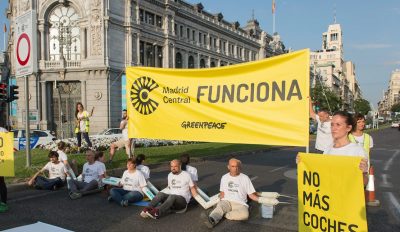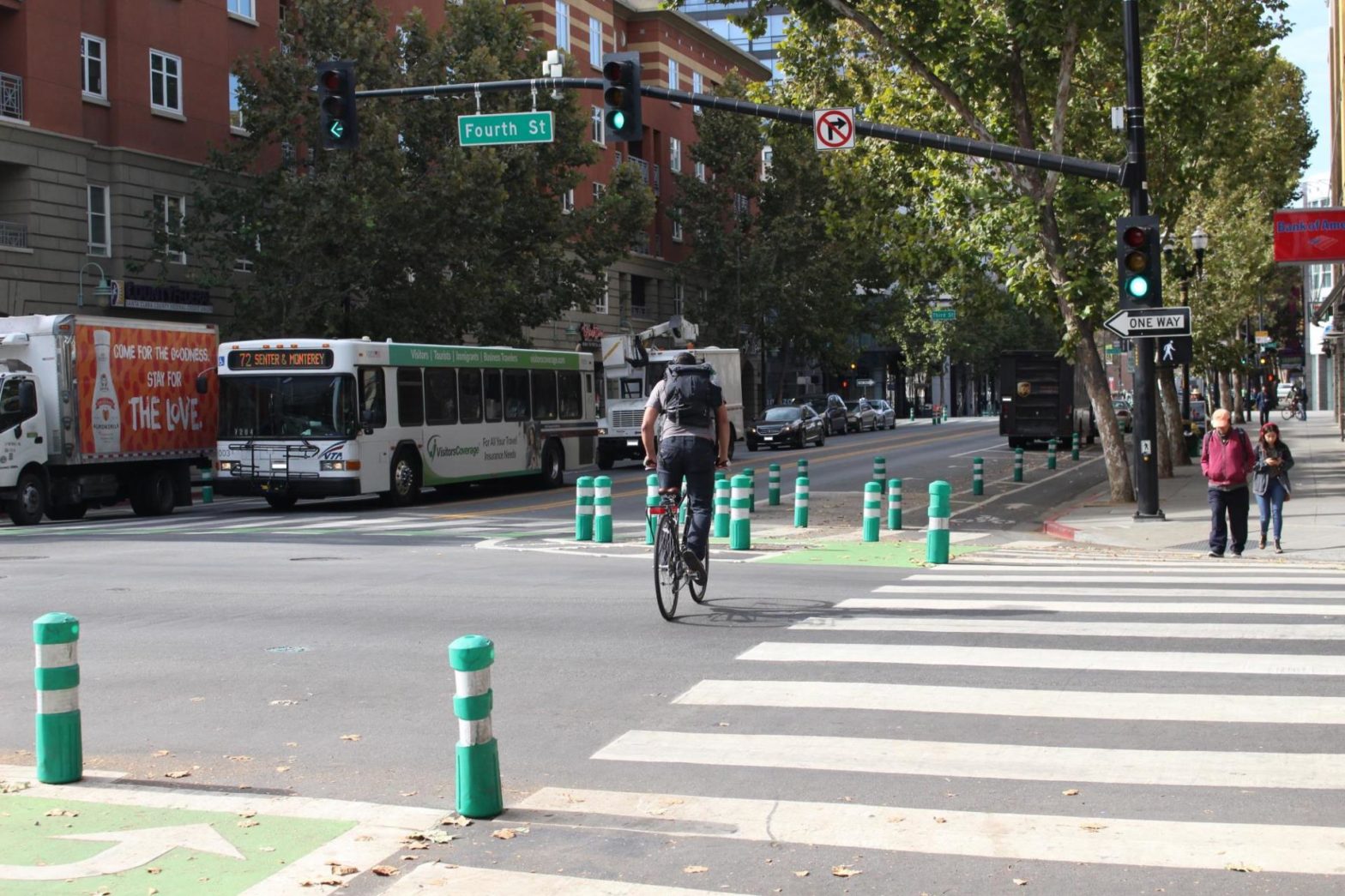
Photo: greenpeace spain
Madrid’s low emissions zone to be scrapped
14 May 2021
by Sarah Wray
Madrid’s controversial low-emissions zone (LEZ), Madrid Central, is set to be scrapped following a ruling by the Spanish Supreme Court.
Environmental group Ecologists in Action had fought to keep the zone in place, but was informed this week of the court’s decision to reject its appeal.
The group had challenged a ruling from the Madrid High Court in July 2020, which cancelled the LEZ over procedural technicalities, leaving enforcement in a state of legal limbo.
Speaking on the ruling, Madrid Deputy Mayor Begona Villacis said: “The Madrid Central plan to create a low emissions zone could [have been] a good idea…but it was executed in a very shoddy way.”
Villacis added that the city administration has a new LEZ plan which will be announced soon.
Madrid’s City Council has indicated that despite the court’s ruling, the zone remains in place, with offenders still liable for a €90 (US$108) fine should they enter in a polluting vehicle.
Adrián Fernández, Mobility Campaigner, Greenpeace Spain, told Cities Today: “The suspension of this low-emissions zone, one of the most ambitious and effective in Europe, leaves people of Madrid exposed to the risks that traffic pollution generates over their health and environment.”
Fernández also criticised Madrid Mayor, José Luis Martínez Almeida, calling his opposition to Madrid Central “irresponsible”.
Madrid Central
Introduced in November 2018, petrol vehicles registered before 2000 and diesel vehicles registered prior to 2008 were banned from a 2.9 square kilometre section of the city centre, which is monitored by 115 cameras that record and cross-reference vehicle licence plates.
Exemptions were made for electric vehicles, public transport and some delivery vehicles, with permits issued for the zone’s residents and their visitors.
The zone was previously suspended in July 2019 by Mayor Martínez-Almeida, only to be reinstated by a court a week later.
It was then suspended again in July 2020 after two appeals by the mayor’s administration.
Martínez-Almeida had previously stated that he was “not going to accept a single lesson from the left in the fight for air quality” after claiming that pollution in the capital had actually increased since the introduction of the zone in November 2018 by Madrid’s former left-wing mayor, Manuela Carmena.
Local media have reported it may take two months for the ruling to be implemented.
Drop in pollution
According to a report in Spanish newspaper El Pais, nitrogen oxide emissions fell by 38 percent in Madrid’s centre during the first month of the zone’s operation, while carbon dioxide emissions dropped by 14.2 percent.
A January 2020 report by Ecologists in Action also revealed significant drops in nitrogen dioxide pollution at 22 of the 24 air-quality monitoring stations in Madrid when measured against the average of the previous nine years.
Although it saw a reduction in pollution levels at the beginning of the pandemic, Madrid has consistently failed to meet the European Union’s limit on nitrogen dioxide emissions since 2010, and the Spanish capital has been threatened with EU sanctions for breaching regulations.
Image: Greenpeace











